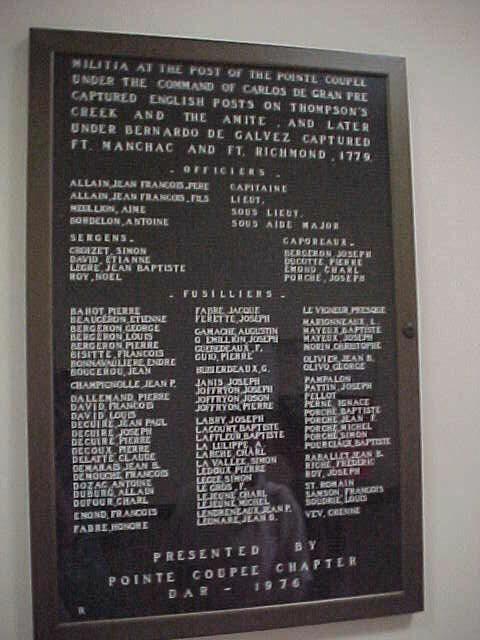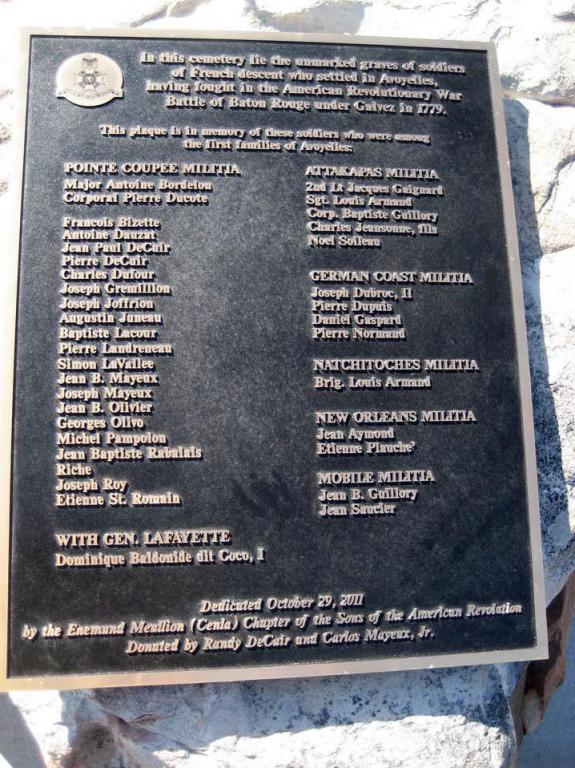Jean/Pierre/Pedro NORMAND/VORMAN
SAR Patriot #:
P-256793
The following information was assembled from numerous sources and cannot be used directly as proof of Qualifying Service or Lineage.
It is considered a research aid and is intended to assist in locating sources that can be used as proof.
State of Service: LA
Qualifying Service: Patriotic Service
DAR #: A209043
Birth: 27 Mar 1742 Montreal / Quebec / Canada
Death: aft 09 Jul 1780 / Saint Johns Parish / LA
Qualifying Service Description:
Soldier, Fusileer, Galvez, German Coast, LA Militia, 1778
Additional References:
- Charbonneau & Legare, Repertoire des actes de bapteme mariage sepulture et des recensements du Quebec ancien, Vol 24, pg 133
- Conrad, Saint-Jean-Baptiste des Allemands, pg 17-18
- De Ville, LA Soldiers in the American Rev., pg 51, 53
- Schmidt, Galvez and other LA Patriots, 1776-1783, pg 51-52
- Churchill, The Galvez Expedition: 1779-1783, Reg. of Infantry Regt. of LA, Roster. Vol. 18, No. 71. Jun 1979, pg 383
- Louisiana Census and Militia Lists, 1770-1789 Vol 1, pg 70-71
- DAR cites CHURCHILL, SPANISH RECS, pg 135, 137
Spouse: Marie Marguerite Vicknair/Vichner/Viener/Wichner
Children: Laurent Sr; Jean Pierre; Francoise; Marie Augustine; Marguerite; Gertrude;
Members Who Share This Ancestor
| Date Approved | Society | ACN | SAR Member Info | Lineage via Child | View Application Detail | |
|---|---|---|---|---|---|---|
| 2003-01-15 | LA | 14836 | Clifford Joseph Normand (157351) | Pierre | ||
| 2006-12-29 | LA | 27111 | Larry Paul Normand (168307) | Laurent | ||
| 2010-04-27 | LA | 38590 | Mark Joseph Normand (176814) | Laurent | ||
| 2011-10-04 | LA | 44365 | Martin Wayne Gauthier (180903) | Jean | ||
| 2014-07-17 | LA | 59604 | Edwin Washington Edwards (191640) | Francoise | ||
| 2015-04-24 | LA | 63468 | John E Voinche (194382) | Jean | ||
| 2015-05-08 | TX | 63816 | David Lee Peavy (194635) | Jean | ||
| 2019-08-16 | VA | 84700 | Donald Paul Francisco (212615) | Jean | ||
| 2020-03-06 | MS | 90822 | Joseph Oliver Francisco (214795) | Jean | ||
| 2021-10-29 | LA | 99497 | Chadwick Keith Whitstine (220869) | Marie | ||
| 2021-10-29 | LA | 99498 | Jesse Whitstine (220870) | Marie | ||
| 2021-10-29 | LA | 99499 | Charles Wesley Whitstine (220871) | Marie | ||
| 2023-07-28 | VA | 108317 | Leo Gerard Francisco (227354) | Jean |
Location:
Mansura / Avoyelles Parish / LA / USA
Find A Grave Cemetery #:
Marker Type:
SAR Memorial Plaque
SAR Grave Dedication Date:
29 Oct 2011
Comments:
per Find-a-Grave St Paul Funeral Register, Bk 1, Page 2
Directions to Cemetery / Gravesite:

